What does a daikon look like and how to grow it?

Nowadays, not every gardener knows what a daikon looks like and how to grow it correctly. So far, this plant, which has rather large fruits, is not as widespread in our country as an ordinary radish. However, the demand for a unique crop is growing in view of its beneficial properties, maximum ease of care and increased yields.
What is this vegetable?
This plant is a vegetable crop that belongs to the subspecies of sowing radish and, therefore, to cabbage... The term "daikon" itself, translated from Japanese, means "big root". In addition, the vegetable is called white radish and Chinese radish. It is of Asian origin and is in high demand in China and Japan.
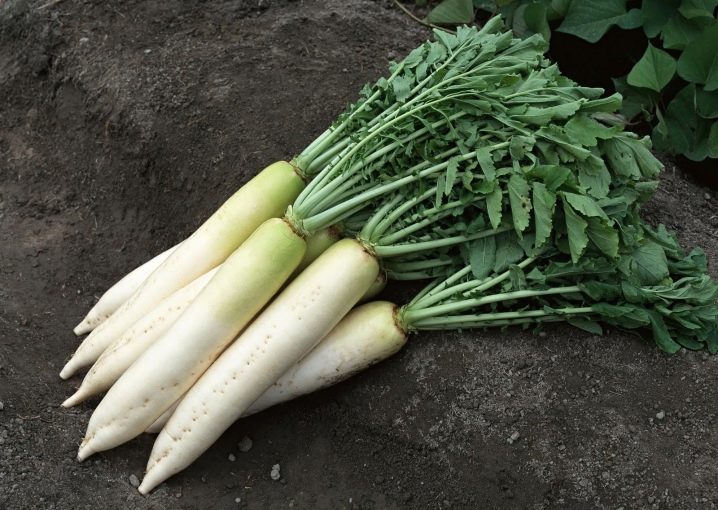
The main features of this type of radish are as follows:
- taking into account the variety, the shape of the root crops can be cylindrical or round;
- pure and hybrid varieties have white and light green fruits, respectively;
- depending on the varietal variety, the weight of root crops can range from 500 g to 2-3 kg (but Japanese specialists also grow record specimens, the weight of which exceeds 15 kg);
- the length and diameter of the fruits reach 60 and 10 cm, respectively;
- there is no pronounced bitterness here, as in ordinary radish;
- in parallel, fruits with juicy and slightly sweetish pulp have a delicate and very pleasant aroma;
- yield indicators - from 5 to 10 kg from each square of the garden;
- it takes an average of 60-70 days to ripen the crop after planting;
- not only fruits, but also tops are edible and widely consumed in food;
- daikon is unpretentious to the composition and quality of the soil, however, preference is given to loose and fertile soil.
One of the key characteristics is good frost resistance, since the plant is able to tolerate a decrease in the thermometer to a mark of -4 degrees. The shelf life of the fruits reaches 2 months.
Daikon is a culture that belongs to the so-called short day category. The optimal planting time is late July or early August.


The best varieties
The varieties of the "big root" that exist today are classified according to certain characteristics. At the same time, the list of key points includes the ripening time, the parameters of the root crops themselves, as well as yield indicators. Given the growing seasons, the Japanese distinguish 4 varietal groups:
- "Aki" - autumn;
- "Fuyu" - winter;
- "Haru" - spring;
- "Natsu" is summer.
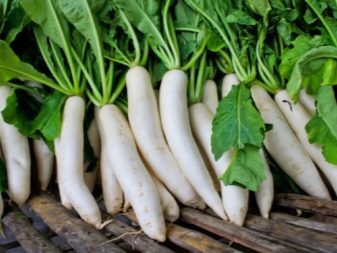
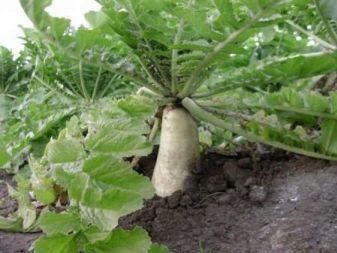
Now we will consider the most popular varieties suitable for growing in Russia, including the Moscow region and the entire middle lane.
- "Sasha" - early maturing variety with rounded and slightly elongated roots weighing from 0.2 to 0.4 kg. The yield is 4-5 kg per square of the garden.
- "Minovashi" - early ripening species, characterized by large (up to 1.5 kg) fruits. They have a cylindrical shape, white skin and mild taste. The lush foliage used for food is also one of the features. The yield is up to 13 kg, and 2 crops are harvested per season.
- "Russian size" - another early ripening hybrid, the ripening time of which is no more than 45 days. Root crops are quite long and weighty (they can reach 0.6 m and 2 kg). Productivity - from 5 to 10 kg.
- "Emperor" - varietal variety with bright red roots in the form of icicles.The ripening period is on average 60 to 75 days, and the yield is 4 kg per square meter of planting.
- "Caesar" - mid-season daikon with white cylindrical fruits. The yield of the variety is from 3 to 5 kg per square. The main disadvantage is that the harvest is stored for no more than 3 weeks.
It is also worth paying attention to the hybrid. "Raspberry nectar F1", which is a variety of Japanese selection, unique in appearance and taste. It is considered the sweetest of the early maturing species.
The growing season from sowing to harvest is 50 to 60 days.
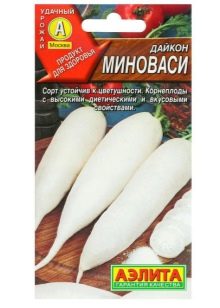
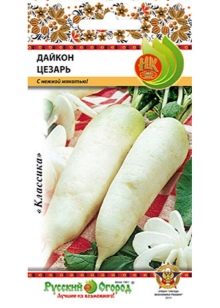
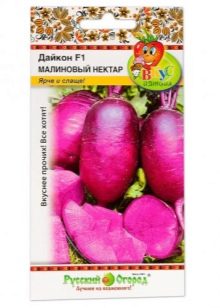
Landing nuances
There are two ways to grow daikon: seedlings and seeds. In any case, it should be remembered that the beds need to be dug to a depth that exceeds the shovel bayonet. Such operations are carried out in the fall (for spring sowing) or in the spring (if the decision is made to sow in July or August). It is also important to add enough compost or humus to the dug soil to improve aeration.
In parallel, experienced gardeners use phosphorus-potassium fertilizer complexes, which have a positive effect on the formation of healthy tops and the root crops themselves. If planting is carried out in acidic soil, then it is worth adding effective deoxidizers such as dolomite flour and ash.
When choosing a good place for a daikon, it is important to take into account what crops were previously cultivated on it.... As practice has shown, this vegetable grows well where its predecessors were potatoes, representatives of the legume family, cucumbers, as well as dill, lettuce, onions and garlic.
It is highly undesirable to plant a plant after its relatives. We are talking about radishes, radishes and cabbage.
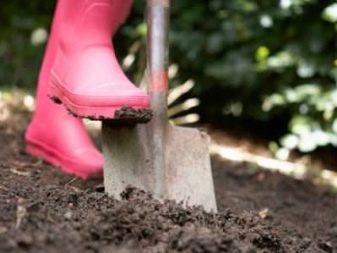

Seeds
Before using the seed, it is recommended to pre-treat it to prevent diseases common to most crucifers. Experienced farmers prefer to avoid the use of chemicals in this case. One of the most popular and effective techniques is hardening with a contrast shower. To do this, immediately before sowing seeds, you will need:
- pour water at a temperature of 45-46 degrees for 20 minutes;
- place in cold water (from 0 to 3 degrees);
- send to the refrigerator for a day.

The preparatory phase also includes harrowing a pre-prepared bed to get rid of weeds. Sowing is carried out in shallow furrows, located at intervals of 0.5 m. At the same time, seeds are buried by 3-4 cm. By the way, some gardeners prefer the nesting method.
Rows and holes are sprinkled with soil and covered with wood chips, which effectively repels pests. The first shoots will appear in 5-7 days. Thinning of plantings is carried out after the formation of 2 true leaves. With the nesting scheme, one of the strongest sprout is left in each outlet, and the rest are removed or transplanted. When sowing in rows, leave an interval between plants of 30-35 cm.

Seedlings
The first step is to prepare containers, the depth of which should be 10-12 cm. Sowing seeds for seedlings and caring for it is as follows:
- fill containers with substrate (peat and garden soil are taken in equal parts);
- plant seeds, burying them into the soil by 15-20 mm (several pieces per pot);
- water the seedlings and make a transparent shelter;
- air the crops daily for half an hour, removing the film or glass;
- water the seedlings moderately;
- thin out as soon as two true leaves are formed;
- pinch weak shoots, leaving one strong specimen;
- make complex dressings;
- start hardening the seedlings after three weeks (the time for "walks" should be gradually increased).
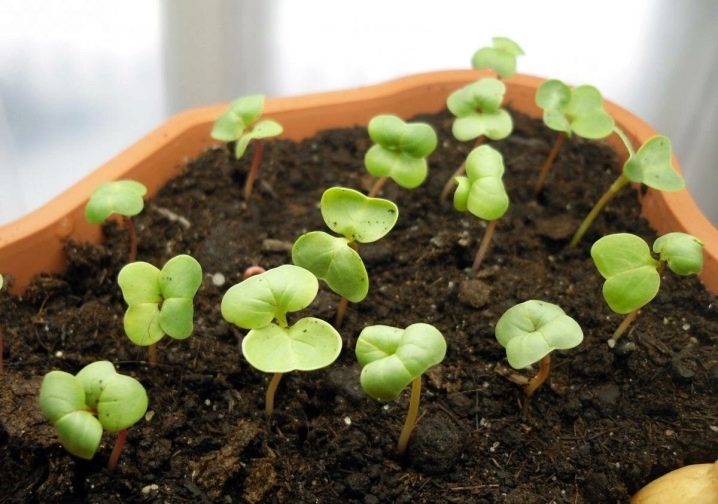
You can transfer the planting material to a permanent place when the temperature does not drop below +10 degrees. The transplant involves the following steps:
- prepare holes, the depth of which should be 8-10 cm (the intervals between the holes and rows are made from 0.2 to 0.3 and from 0.4 to 0.6 m, respectively);
- water the seedlings a few hours before transfer;
- spill the prepared wells with warm water, the consumption of which is a liter for each well;
- transfer the seedlings to the pits along with the earthen clods;
- sprinkle and compact carefully;
- mulch the landing.
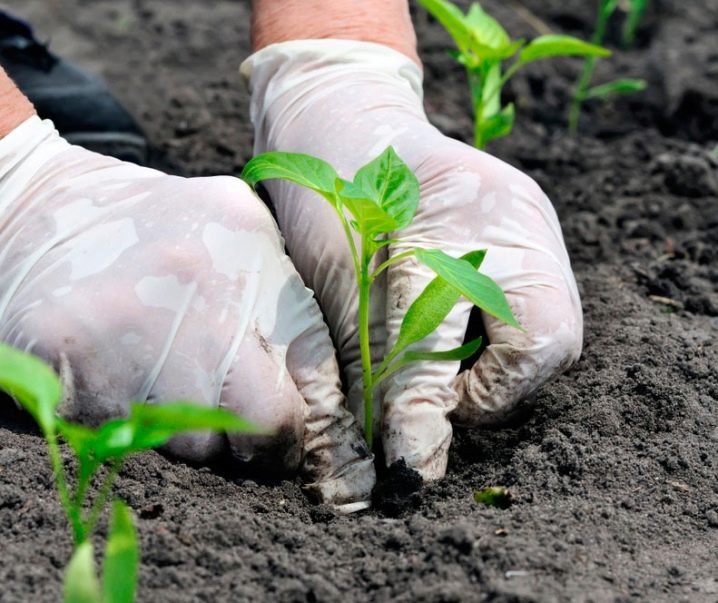
Care features
Of course, the volume and quality of the crop will directly depend on how well the rules of agricultural technology are followed. In this case, we are talking about both the nuances of planting a vegetable crop, and about caring for it at all stages of growth and development of root crops.
It is important to note that the cultivation of this Japanese and Chinese radish does not involve any unusual methods.

Watering
The described culture requires regular and sufficiently abundant irrigation. But at the same time, it is very important not to overdo it with irrigation procedures in order to prevent destructive stagnation of moisture. In this context, it is strongly recommended to keep in mind the following key points.
- If the seedling method was chosen, then from the moment the material is planted to a permanent place of growth, watering must be carried out with a water consumption of 1-2 buckets per square.
- Irrigation intervals are 2-3 days.
- The optimal time for the implementation of agrotechnical measures is evening... In hot weather, experienced gardeners advise watering the crop in the early morning.
- Watering stops after full ripening of the crop.
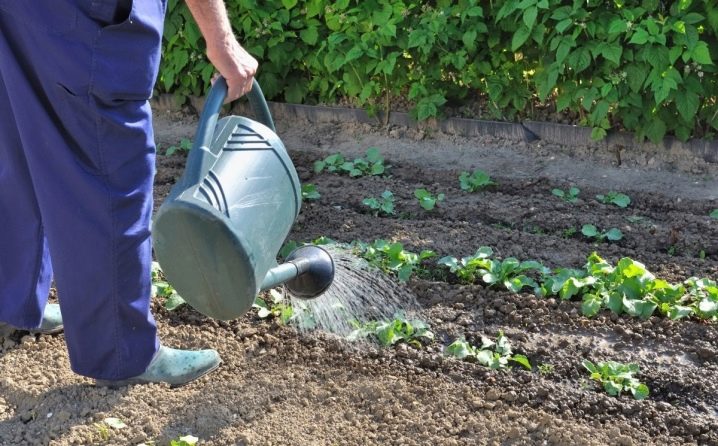
Top dressing
Initially, it is important to note that most dressings are applied to the soil at the stage of preparing it for planting a daikon. Young plants, planted in fertile soil, do without additional fertilizers. If we are talking about depleted soil, then when loosening, it will be necessary to periodically add mineral additives. It is important to take into account the following nuances.
- Growing the described variety of radish in the open field provides the introduction of nutrients only twice throughout the season.
- The plant actively responds to the use of organic matter... If there is a need for fertilizing planting, then slurry irrigation is successfully applied. An alternative would be an herbal infusion (fermented). It is important that fertilizers are applied at the start of the active growing season.
- Approximately in the middle of the growing season the introduction of potassium sulfate or superphosphate.
By the way, mineral complexes are fully capable of replacing ash.
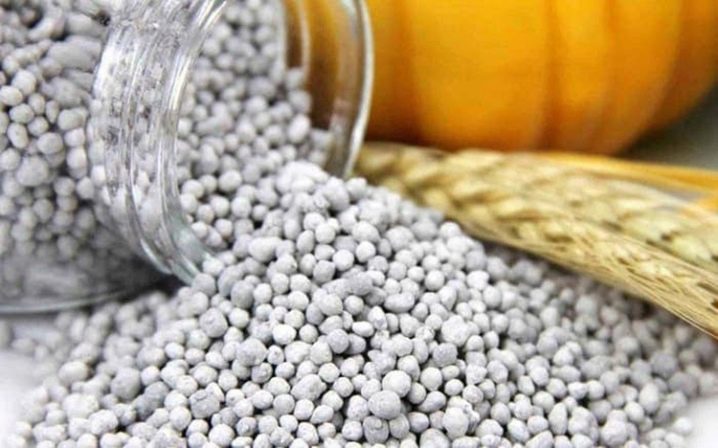
Weeding and loosening
It is no secret that after watering the beds are actively overgrown with weeds. Therefore, after each moistening of the soil in areas with daikon, it will be necessary to loosen it. At the same time, it is important not to turn the earth over, but to carefully raise it to ensure full access of air and water to the root system. You can use hoes and hoes for this, as well as ordinary rakes.
But if weeds nevertheless appear on the planting, then weeding is indispensable. You can remove uninvited guests manually or using a garden tool.
The procedure must be carried out as carefully as possible. It is best to weed the beds after they have been moistened.
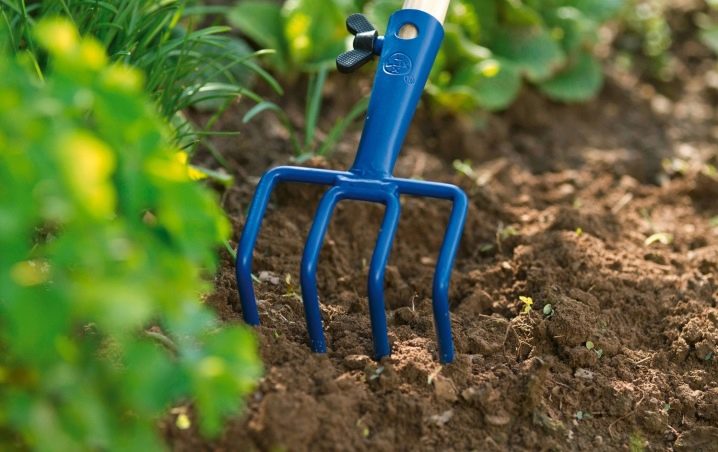
Diseases and pests
Various infections and parasites can cause significant damage to the crop. The following pests pose the greatest danger to Chinese radish.
- Sacral fleas - small insects that gnaw through real passages in the tops. As practice has shown, ash is an effective means of pest control. It needs to be scattered over the site.
- Garden scoop, caterpillars which causes irreparable damage to the tops of Chinese radish and can destroy the entire plant, is also often found in the beds. You can effectively deal with caterpillars using a pale pink solution of potassium permanganate.
- Aphid - a pest, the hordes of which weaken the daikon as much as possible, sucking out all the juices from it. Such attacks, in the absence of appropriate measures, can result in the death of plants. You can effectively and quickly get rid of aphids by spraying the plantings with nettle infusion.
- Slugs - gluttonous parasites, capable of quickly destroying both the tops and the fruits themselves. When slugs attack, wood ash treatment will help save the crop.
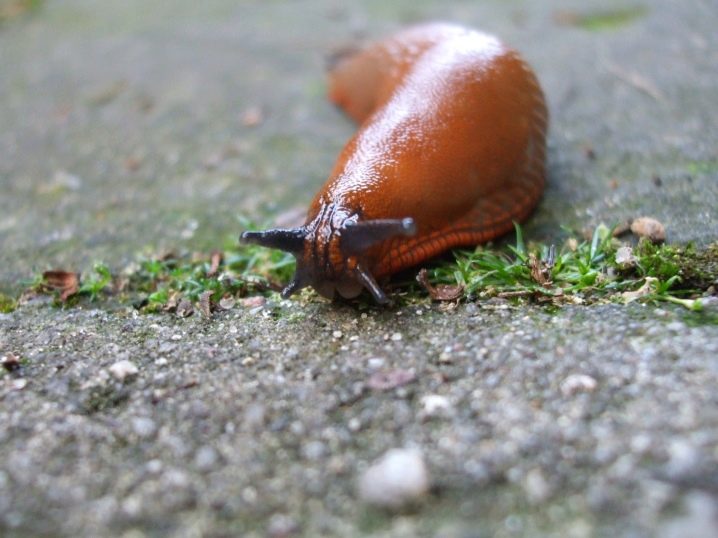
It is believed that the described type of radish is not prone to diseases. In the overwhelming majority of cases, unfavorable conditions and gross violations of the rules of crop care become the source of problems.
First of all, it is important not to allow waterlogging of the soil, which provokes the development of mucous bacteriosis in the second phase of the growing season. In addition, daikon defeats are possible:
- felt disease;
- black leg;
- mosaic;
- bacteriosis of the vascular type and keel.
Long-term practice has proven that timely and competently taken preventive measures are the most effective means. To prevent viruses and fungal infections, you must:
- make a choice in favor of the most disease-resistant varietal varieties, taking into account the characteristics of the region;
- qualitatively disinfect seeds;
- remove weeds in time and fully;
- fight pests;
- thoroughly clean the beds from plant residues.
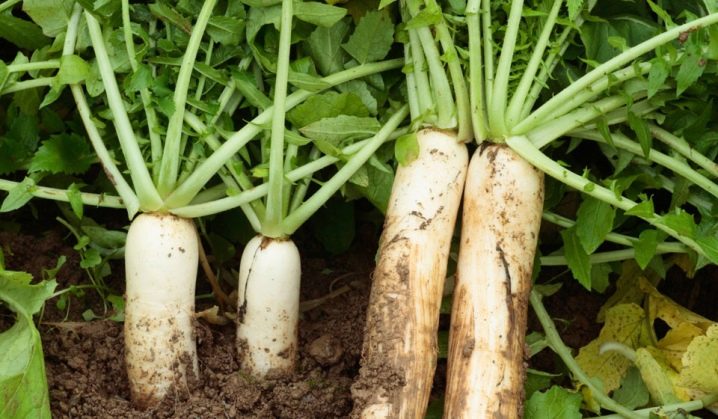
Harvesting and storage of crops
The described culture reaches its technical maturity in the period from 40 to 70 days from the moment of planting seedlings or sowing. Of course, the timing here is directly determined by the varietal characteristics. In the context of harvesting and its subsequent storage, the following key points should be highlighted.
- 6-7 days before collection it is necessary stop watering in full.
- After the root crops ripen, the crop should be immediately harvested, because, being in the ground for too long, fruits will rapidly lose their key qualities and taste.
- Dig up the radish in warm and sunny weather.
- From the loose soil, the daikon is carefully pulled out by the leaves. If the soil is clay, then you will have to use a shovel.
- Before sending for storage, the harvested crop must dry in the sun for a couple of days.
- The daikon is kept in bags or boxes. It is important to place them in a cool place (optimal thermometer readings are from 0 to +5 degrees), but at the same time a dry place (from 50 to 70% humidity) is mandatory.
Experienced vegetable growers advise sprinkling the fruits with moss or sand in order to extend the shelf life.

If the appropriate conditions are provided, then the daikon can be stored for 1-2 months. At the same time, the fruits will retain their taste and presentation throughout the specified period. An equally important point is that after harvesting, it is necessary to dig up the area with the obligatory removal of all plant residues. It is also worth considering that the culture for a relatively short growing season manages to noticeably deplete the soil.
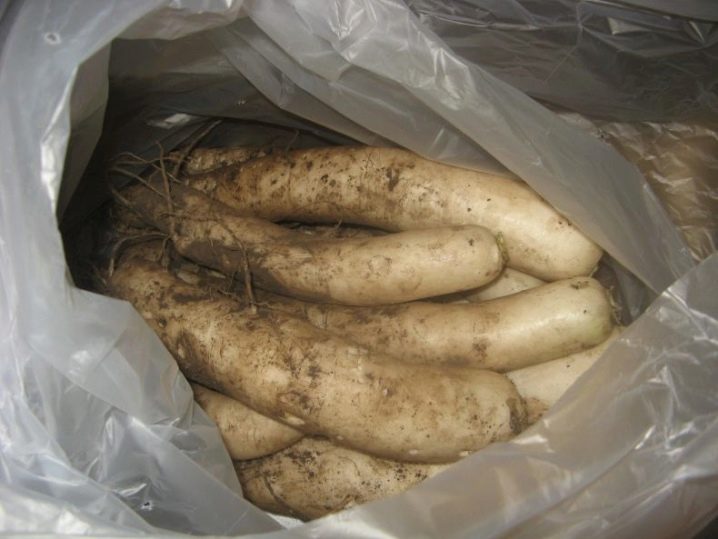













The comment was sent successfully.